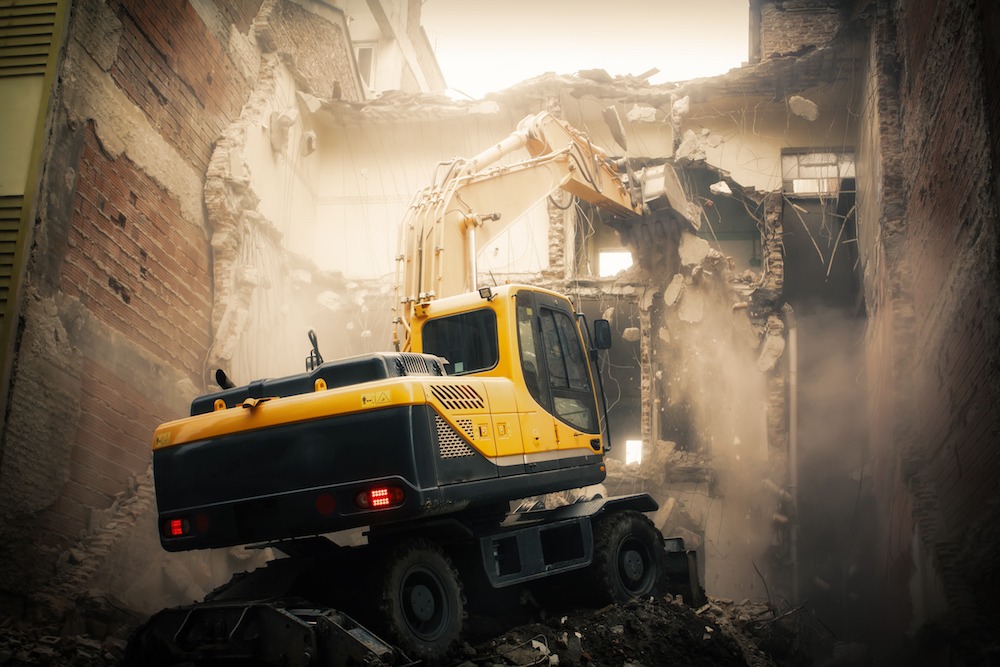Vehicles are a part of day-to-day life in the world of masonry. Whether it be a small contractor using his pickup truck and a small forklift to move pallets around a jobsite, or a large contractor with a team of hundreds using a telehandler to reach portions of a structure, they come in handy. They’re an integral part of any sized job. However, driving and using vehicles safely is something contractors just can’t take for granted. This article is intended to serve as a resource on some of the basics for safe vehicle operation.
VEHICLE MAINTENANCE
Why is vehicle maintenance so important? The answer should be obvious.
A driver spending a full day on the road needs to feel confident that his vehicle will function efficiently and safely under all driving conditions. The owner of the vehicle is interested in preventive maintenance, too.
The simplest and most economical way of protecting the original investment is through preventive maintenance. Use the owner’s manual for a guide. A preventive maintenance program can not be considered good without record keeping. Each vehicle should have its own maintenance and repair file, including a lubrication record, an inspection and repair record, and a schedule outlining a program of periodic maintenance and inspection. If the vehicle is leased, the record should identify the contractor supplying the vehicle.
Drivers should be responsible for knowing the mechanical condition of their vehicles. It is the driver who must assure that at the start of each trip that the vehicle is in good condition. Before starting off, you should check inside the vehicle and be sure the floor is free of obstructions and debris such as tools, rags or soiled clothing. You should also take a close look at the seat and seat belts to be sure they are sound.
Start up the engine and watch the instruments – they should give a normal reading. While the engine is running, heater, defroster and windshield wipers should be checked. Check the emergency equipment. The fire extinguisher should be charged and operable, and there should be adequate flares or reflective devices. Check the headlights, body lights and reflectors outside the vehicle. The driver should be sure the tires and wheels are in good condition.
BACKING TECHNIQUES
One out of every four accidents can be blamed on poor backing techniques, according to the National Safety Council. Backing accidents are almost always preventable if the driver is properly trained and prudent.
Drivers should avoid backing whenever possible, or pick spots that reduce backing to a minimum. This is a knack that can be learned. Park defensively by choosing your parking spot as prudently as you can, not too close to a corner or driveway, not too close to a road or construction site, and not where your vehicle will block or crowd other vehicles. Park in the direction traffic is moving, and center your vehicle in the parking space.
If parked on an incline, turn front wheels to wedge into the curb on the downhill side. When in an alley that does not permit drive through or turnaround, back into the alley (unless prohibited by local ordinance). This will allow you to see the traffic picture as you drive out. If you have to back out, ask someone to act as your guide and signal when it’s all clear. The driver who practices defensive parking will never take any situation for granted, but will observe and judge each parking requirement on its own.
Even though backing into a particular parking spot a dozen times, look and evaluate the same spot each time to be sure of clearances and to make certain no new obstacles are in the way. It takes lots of practice to develop good backing skills, and a tight spot is no place to get this experience. If you have access to a test driving area where backing maneuvers can be practiced, use it. It is amazing how many, even if experienced, will have backing accidents in a new situation. Knowledge of good backing practices cannot result from any number of years experience in normal forward driving.
When backing up, it’s not only the gear that’s in reverse. Learn exactly how the rear end responds to every little twist of the steering wheel when backing by practice and more practice. Be acutely aware of that big blind spot when backing. Even rear view mirrors can’t see around the obstruction. The only way for the driver to know for sure is to get out and look. By such a walk around inspection learn the exact clearances on either side, what steering is needed and the exact distance to your stopping point.
Every driver must know exactly what is going on around them at all times, this includes backing up a vehicle and must be done slowly.
PREVENTING VEHICLE FIRES
Motor vehicle fires can be more terrifying than a serious collision. Although the frequency of vehicle fires is quite low, when one does occur, the severity is sky high.
Some causes of vehicle fires are smoking, dragging brakes, overheated tires and faulty wiring and exhaust systems. We must be just as careful, if not more so, in our vehicles as we are in our homes.
As you know, smoking is prohibited when you are transporting hazardous materials. However, it is also a good idea to refrain from smoking when driving. If you must smoke, be extra careful when disposing of ashes, matches and butts. The best place to end your smoke is in an ashtray. Discarded butts or ashes often blow back into the vehicle, starting a fire.
Another safeguard against vehicle fires is regular maintenance of braking system. If the vehicle does not coast freely, the brakes may be dragging and initiate a fire. Have a qualified mechanic check your vehicle to assure proper adjustment of the brakes and wheel bearings.
Did you know that a small pinhole in your exhaust system can be a dangerous fire hazard? The hot gases act as an ignition source and can combine with accumulated grease and oil, developing into a major fire. Again, constant maintenance is an absolute must to prevent a vehicle fire.
It’s a good idea to have your wiring checked every time you have your vehicles motor oil changed. It only takes a few minutes to make sure that this fire source remains under control.
Another major cause of vehicle fires is overheated tires. Under inflation is a principle source of tire fires. Under inflation causes the casing of the tire to continually bend and flex, and, like a piece of metal bent back and forth, the tire becomes hotter and hotter until a fire breaks out.
Don’t let a vehicle fire put you down. Vehicle fires can start anywhere when conditions are right. Keep your vehicle clean, well maintained and avoid smoking or at least careless smoking.
FATIGUE CAN BE FATAL
How many times have you caught yourself staring fixedly at the road ahead, hypnotized by the monotony of the highway? Good drivers who spend long hours on the road realize that fatigue can be fatal.
Extreme fatigue attacks a driver’s mental ability and muscular coordination. Fatigue hampers a driver’s ability to judge distances, speed, or driving conditions. These circumstances can lead to a serious accident. The Federal Bureau of Motor Carrier Safety states that, “No driver should operate a motor vehicle, and a motor carrier should not require or permit a driver to operate a motor vehicle, while the driver’s ability or alertness is so impaired, or so likely to become impaired, through fatigue as to make it unsafe to operate the motor vehicle.”
In fact, the Bureau has established definite time periods for maximum driving. Experts have concluded that driver performance deteriorates, driver alertness diminishes, and accident probability increases as driving time increases. The frequency of accidents dramatically increases after about 7 hours of driving time. While you are still alert, you will sit relatively quietly in your seat. As you begin to tire, you become restless, squirm in your seat, stretch, rub your eyes, and maybe start to crack your knuckles. A driver may experience short lapses of attention, but as fatigue sets in, you pay less and less attention to the instrument panel and the rear and side view mirrors.
Here are some of the precautions you can take to combat fatigue:
- A driver should not operate a vehicle when tired, ill, or when any other condition makes his driving ability less than 100%
- A driver should not operate a vehicle beyond the hours of service limitations developed by the Bureau of Motor Carrier Safety
- Frequent rest stops should be made. Any activity which substitutes a different physical act for the monotony of driving helps refresh a driver
- If available, a drink of coffee or water is often enough to increase alertness
- Fatigue comes on very quickly. Drivers should get off the road before they fall asleep instead of afterwards
- Do not use alcohol or drugs of any kind at any time

